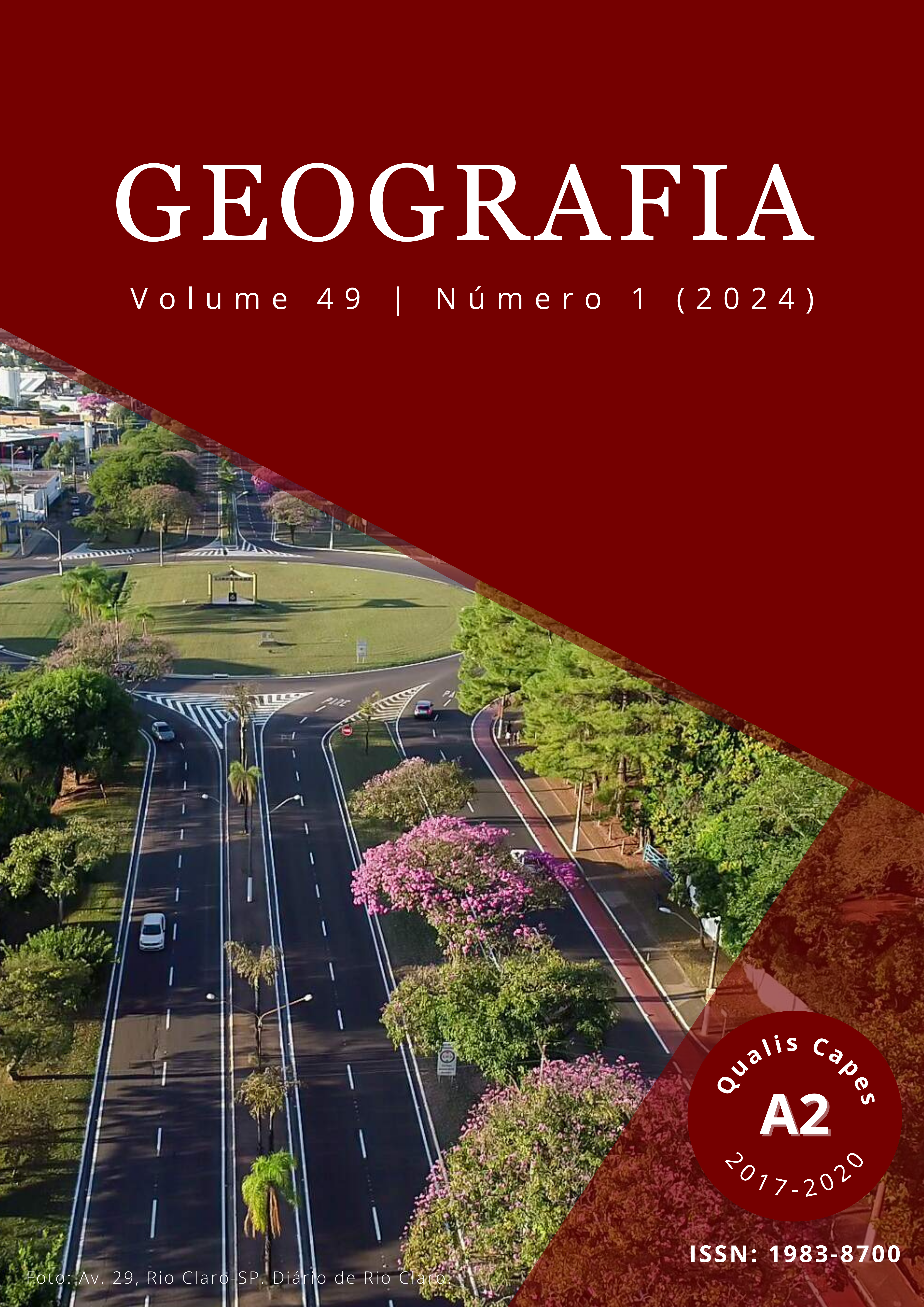Spatial data representation and estimation of sociodemographic data based on ZIP Code: an application for Belo Horizonte, MG
DOI:
https://doi.org/10.5016/geografia.v49i1.18312Abstract
The paper proposes a methodology of spatialized socioeconomic and demographic data representation that minimizes the effects of scale and zoning and allows greater spatial resolution and temporal detailing and guarantees the confidentiality of information. The data was processed at the scale of public places (streets and avenues) based on their Postal Address Code – CEP. Subsequently, an interpolated grid representing densities was developed, with fixed spatial resolution. As an example of this methodology, two indicators were used for the years 2016, 2019 and 2021 obtained from the Single Registry for Social Programs (CadÚnico) of Belo Horizonte, MG: number of registered families and the percentage of families paying more than 30% of their total family income with rent. The results point out to the feasibility of intertemporal monitoring of information, in defining zoning, in identifying intra-urban phenomena, among other possibilities.
Downloads
Published
Issue
Section
License
Copyright (c) 2024 GEOGRAFIA

This work is licensed under a Creative Commons Attribution 4.0 International License.
The authors maintain the copyright and grant GEOGRAFIA the right of first publication, with the articles simultaneously licensed under the Creative Commons BY 4.0 License, which allows sharing and adapting the articles for any purpose, as long as appropriate credits and provisions of image rights, privacy or moral rights. Other legal attributions can be accessed at: https://creativecommons.org/licenses/by/4.0/legalcode.en.
Geography, Rio Claro, SP, Brazil - eISSN 1983-8700 is licensed under the Creative Commons BY 4.0 License.





